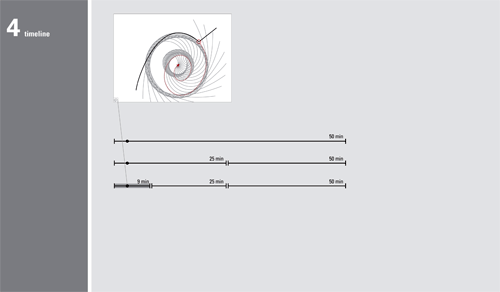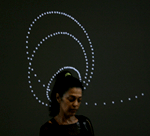
CHOREOGRAPHISMS
X-MOTION
CHOREOGRAPHISMS
concepts user interface ESDI project
UNSQUARE DANCE
RELATED WORK
PUBLICATIONS
PEOPLE
User Interface
The user interface must establish the link between all the languages involved in this project – bodily, systemic and graphic. Even though the user interface was not designed, three relevant issues pertaining to its potential future development were already considered:
It is important to determine the proper amount of control given to the user, as well as the number of options fixed by the system designer and those awarded to randomness. Considering that the system will be used on at least three distinct situations – by a choreographer with no or few visual knowledge; by a choreographer extremely sensible to the visual aspects; and by a choreographer together with a (graphic) artist / set designer / programmer – the suggestion is to design the interface with different level of controls for the user, allowing him to define the parameters and their values progressively.
The Laban method for the description of movement should be used in order to bring the interface closer to the environment of the choreographer. By associating the parameters of form to the qualities of movement described by the method, choreographers will be able to describe their intentions to the system using their own concepts and languange. This would turn possible the correlation between the essential factors that compose movement and the ones that generate form.
A preview option should be available, allowig the user to visualize in real-time the graphic result obtained via manipulation of the formal parameters.
The user interface should have 4 different steps:
1. The user links gradation to the qualities of movement. Next, visualizations that have been previously associated to the different quality degrees of movement are offered to the user. By choosing one that is adequate to her choreography, the user is in fact deciding for one of the following three options: the form is generated in the most literal sense, i.e. it follows the exact trajectory of the movement captured, and is entirely dependent on it; second, the form originates from the trajectory’s path, but develops further away from the path invading new areas of the space/background; third, the form develops in the (visual) space freely, while the captured trajectory influences some of its constituting parameters.
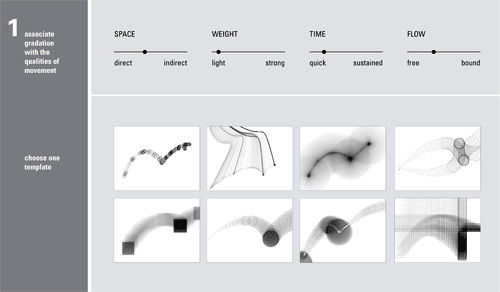
2. Each of the form attributes may be adjusted by the user, and linked to variables such as motion path parameters, clock time, procedural animation objects (motors, oscillators, etc.), or even randomness. The conditions to trigger a new graphic state or the transitions between states are also specified here.
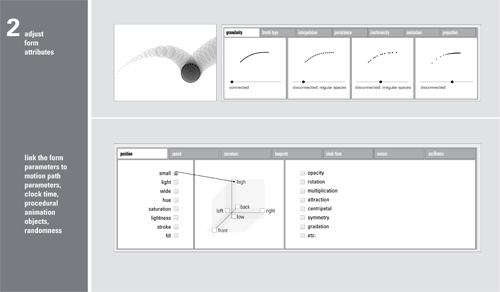
3. The user defines the range of hue, saturation and lightness.
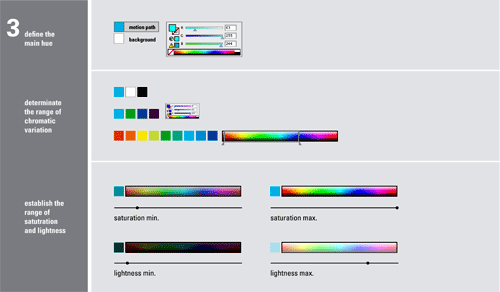
4. The set of form attributes defined by the user is associated to a specific interval of the timeline.
